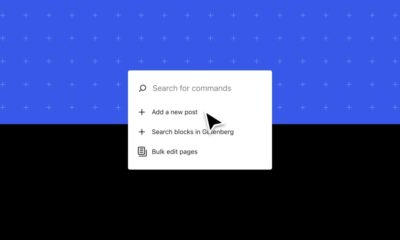MARKETING
Top 6 Benefits of Mobile Banking

Mobile banking offered by traditional or online banks and other financial institutions allows customers to conduct financial transactions using mobile devices. It has received an incredible boost during the worldwide pandemic in the last two years.
But our habits of constantly being around our phones (and doing everything on them- from payment to event booking) means that the allure of mobile banking happened long before this pandemic. Still, we saw robust adoption that usually takes a lot longer to occur during this time.
As a result, alongside the increase of online banks, we are witnessing a drastic rise in traditional banks and financial institutions accelerating their mobile products and rolling out new features.
But what exactly makes mobile banking so popular? Here is our list of the top six benefits that mobile banking offers.
#1 Extensive Convenience
Mobile banking allows individuals and businesses to easily open and manage their financial accounts, send and receive money, pay bills, manage payroll, and most importantly, do all of that 24/7. But, on top of it, online banks provide so much more than these features.
For example, in addition to the services mentioned above, online financial service providers, such as CapWay provide physical and virtual cards, money goal buckets, and tracking transactions and spending categories. And, maybe most importantly, financial access and opportunities for everyone.
As a result, we can see that mobile banking and especially online banks offer extensive convenience beyond saving time and avoiding administrative hassle.
#2 Immediate Access to Account
Online and mobile banking offer you the possibility to log in and check the details of your bank accounts—your balance and pending transactions—at any time. In addition, you can review your banking statements and recent transaction history in real-time. That is an excellent way to monitor transactions posted to your account, no matter your location.
Moreover, on practically all banks apps, you can set up account alerts so you can be notified of every account activity. That way, you can quickly address any suspicious transactions that may occur.
#3 Fast Transfer of Funds Between Accounts
Online transfers are convenient to move money from one bank account to another. And this is another great benefit that online and mobile banking provide users; the ability to move funds between different accounts held at the same financial institution. This feature is handy when you need to pay or get paid as soon as possible. A good example is when your account balance is low, and you have automatic payments or a current purchase that may overdraw your account.
#4 Strengthened Security
Mobile banking apps require a username and password to log in. However, many online banks and bank apps go beyond this essential protection. Especially when it comes to transactions, mobile banking uses a multi-factor authentication system that demands users to go through at least two steps of security setup before managing their accounts.
These include using a primary password, progressing a code that only you possess, or other biometric identification patterns unique to you. In addition, a bank can integrate your account with your device so that you get notified the moment somebody else tries logging in. The integration of all these security steps dramatically reduces the risks of unauthorized access.
#5 Improved Customer Experience
Customers expect an unprecedented level of personal service in a branch, ATM, and in-app. Mobile banking is a convenient solution that allows you to easily access different financial services and products, smooth everyday transactions, and specifically designed round-the-clock services. Since you can do all this and more by using just your phone, your experience with your bank will be increasingly positive. As a result, putting customer experience at the heart of digital banking has become the new norm for consumers interacting with banks.
#6 An Environment-Friendly Way of Banking
Mobile and online banking is an environmentally friendly way of banking because:
- You no longer have to use your car to go to your bank branch because you can do everything online, which means you reduce your carbon emissions.
- There is no need for large bank branches that use a lot of energy.
- It eliminates the use of paper as every notification is sent electronically.
All of this contributes to a better environment, allowing you to do your part in environmental protection.
Conclusion
Innovations in technology have made their way in the banking sector, pressing banks and financial institutions to adopt necessary changes to meet the ever-increasing expectations of their clients. Mobile banking is one of them. It comes with benefits such as convenience, speed, ease of use, security, and 24/7 access to funds. And as people today place a lot more value on their time, mobile banking has become an indispensable factor when opting for a specific financial institution.
Source link




















You must be logged in to post a comment Login